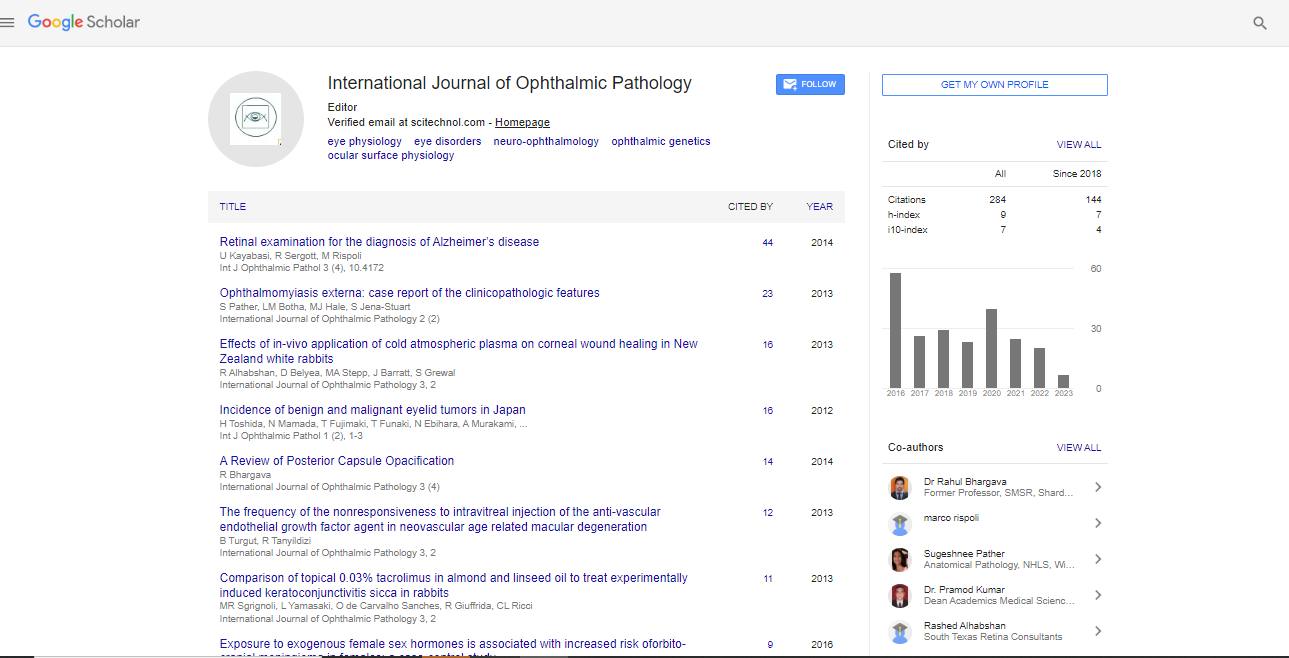Diagnosis of neuropathic corneal pain: Utility of artificial intelligence for assessment of a novel biomarker via in vivo confocal microscopy
Pedram Hamrah
Tufts University School of Medicine, United States
: Int J Ophthalmic Pathol
Abstract
Statement of the problem: The diagnosis of Neuropathic Corneal Pain (NCP) is challenging, as it is often difficult to differentiate from conventional Dry Eye Disease (DED). We have recently identified a potential novel biomarker by corneal In Vivo Confocal Microscopy (IVCM), utilizing morphological nerve changes [Figure 1]. The purpose of this study is to describe analytical and biological validation of this biomarker and to develop utilize artificial intelligence for fully automated analysis of images in a rapid and consistent fashion. Methodology & theoretical orientation: A database of 500,000 IVCM images was used to confirm that the presence of micro-neuromas is a biomarker for NCP by comparing the sensitivity and specificity of identification of NCP patients via micro-neuromas to other IVCM parameters. Inter and intra-observer precision was assessed and descriptive statistics of the IVCM datasets was performed to determine the minimum number of images necessary for high precision of micro-neuroma detection. Biological validation of micro-neuromas was then performed, correlating IVCM results to clinical. An Artificial Intelligence (AI) program was developed and validated for automated identification of micro-neuromas to allow rapid and wide-scale adoption by clinicians. Findings: Analytical validation confirmed that the presence of micro-neuromas was a biomarker distinguishing NCP from DED, with good inter and intra-observer precision. The AI system program had high sensitivity and specificity. Our model showed excellent discriminative ability to detect micro-neuromas (AuROC: 0.97) and the ability to generalize to data from a new institution (AuROC: 0.90). Conclusion: The AI system had a very high AUC for detecting micro-neuromas. The deep neural network shows great promise in identifying micro-neuromas associated with NCP, allowing for the standardization of IVCM image analysis. Our study suggests that artificial intelligence can rapidly evaluate IVCM images, while maintaining a high degree of accuracy.
Biography
Pedram Hamrah is a clinician-scientist focusing his research on Neuropathic Corneal Pain (NCP), Neurotrophic Keratopathy (NK) and dry eye disease. He trained at Schepens Eye Research Institute, Harvard Medical School, where his research resulted in findings that refuted a previous long-standing belief that the cornea is immune privileged due to the absence of bone marrow-derived cells resulting in a paradigm shift in corneal immunology. He has since focused on the area of corneal neuro-immune cross-talk, NCP and NK and has been spearheading diagnosis and treatment of NCP. His research has been supported by numerous NIH, foundation and industry grants. He has authored over 170 peer-reviewed articles and has been the recipient of numerous awards, including the Claes Dohlman Society Award, the Senior Achievement Award from the American Academy of Ophthalmology and the was awarded Gold Fellow at the Association for Research in Vision and Ophthalmology.
 Spanish
Spanish  Chinese
Chinese  Russian
Russian  German
German  French
French  Japanese
Japanese  Portuguese
Portuguese  Hindi
Hindi 